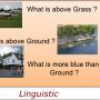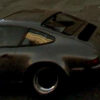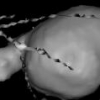88
Voted
CVPR
2010
IEEE
15 years 9 months ago
2010
IEEE
Graph cuts methods are at the core of many state-of-theart algorithms in computer vision due to their efficiency in computing globally optimal solutions. In this paper, we solve t...
CVPR
2010
IEEE
15 years 9 months ago
2010
IEEE
We present a passive computer vision method that exploits existing mapping and navigation databases in order to automatically create 3D building models. Our method defines a gramm...
111
click to vote
CVPR
2010
IEEE
15 years 9 months ago
2010
IEEE
We present an active learning framework to simultaneously learn appearance and contextual models for scene understanding tasks (multi-class classification). Existing multi-class a...
CVPR
2010
IEEE
15 years 9 months ago
2010
IEEE
We present an algorithm that learns invariant features from real data in an entirely unsupervised fashion. The principal benefit of our method is that it can be applied without hu...
102
click to vote
CVPR
2010
IEEE
15 years 9 months ago
2010
IEEE
Graph matching is a classical problem in pattern recognition with many applications, particularly when the graphs are embedded in Euclidean spaces, as is often the case for comput...
107
Voted
CVPR
2010
IEEE
15 years 9 months ago
2010
IEEE
While the problem of tracking 3D human motion has been widely studied, most approaches have assumed that the person is isolated and not interacting with the environment. Environme...
124
click to vote
CVPR
2010
IEEE
15 years 9 months ago
2010
IEEE
Palm lines are the most important features for palmprint recognition. They are best considered as typical multiscale features, where the principal lines can be represented at a la...
CVPR
2010
IEEE
15 years 9 months ago
2010
IEEE
This paper proposes a new stereo model which encodes the simple assumption that the scene is composed of a few, smooth surfaces. A key feature of our model is the surfacebased rep...
117
Voted
CVPR
2010
IEEE
15 years 9 months ago
2010
IEEE
A number of 3D shape reconstruction algorithms, in particular 3D image segmentation methods, produce their results in the form of binary volumes, where a binary value indicates whe...
112
click to vote
CVPR
2010
IEEE
15 years 9 months ago
2010
IEEE
Image matting is the process of extracting a soft segmentation of an object in an image as defined by the matting equation. Most current techniques focus largely on computing the ...




